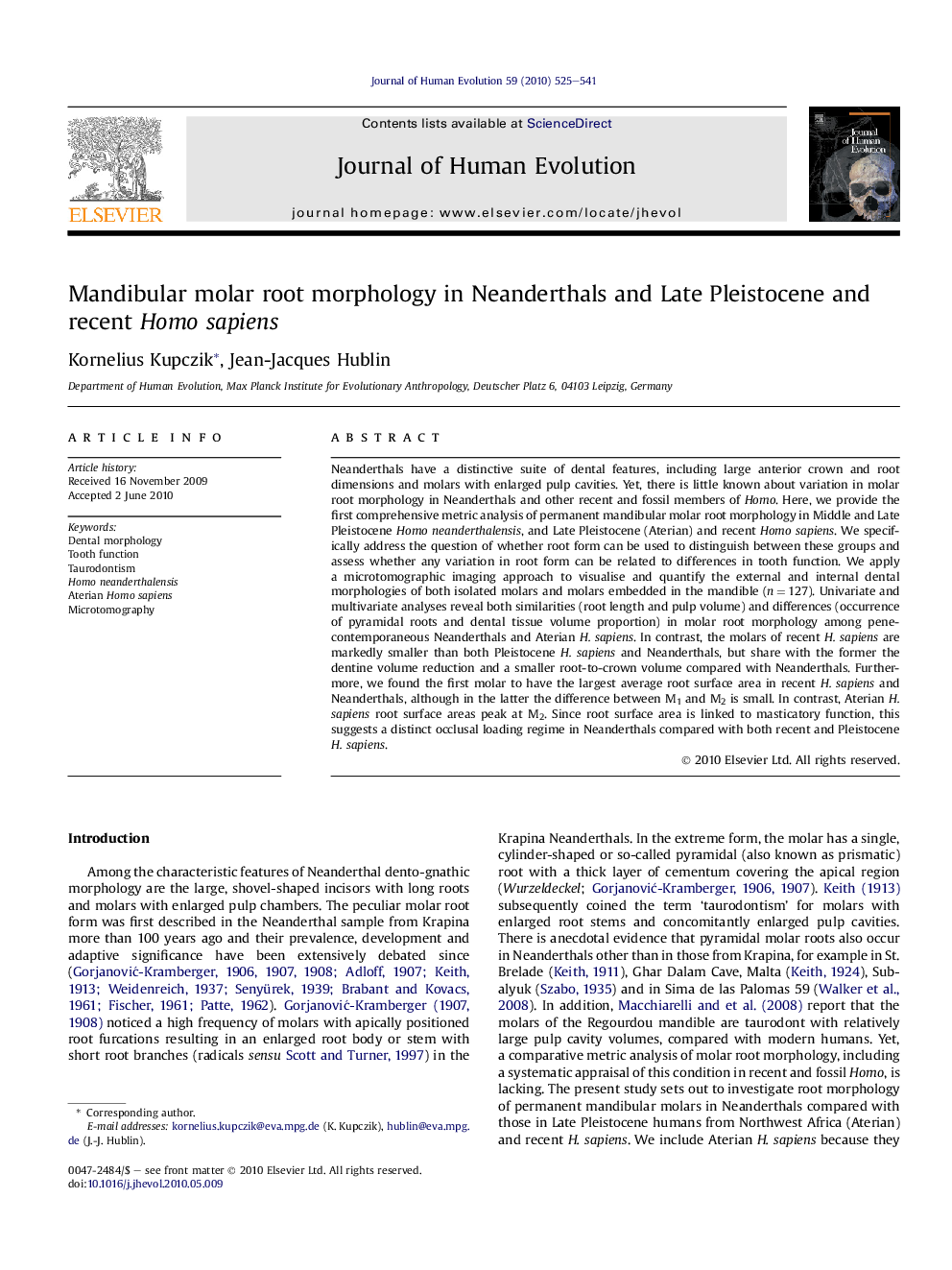| Article ID | Journal | Published Year | Pages | File Type |
|---|---|---|---|---|
| 6389280 | Journal of Human Evolution | 2010 | 17 Pages |
Neanderthals have a distinctive suite of dental features, including large anterior crown and root dimensions and molars with enlarged pulp cavities. Yet, there is little known about variation in molar root morphology in Neanderthals and other recent and fossil members of Homo. Here, we provide the first comprehensive metric analysis of permanent mandibular molar root morphology in Middle and Late Pleistocene Homo neanderthalensis, and Late Pleistocene (Aterian) and recent Homo sapiens. We specifically address the question of whether root form can be used to distinguish between these groups and assess whether any variation in root form can be related to differences in tooth function. We apply a microtomographic imaging approach to visualise and quantify the external and internal dental morphologies of both isolated molars and molars embedded in the mandible (n = 127). Univariate and multivariate analyses reveal both similarities (root length and pulp volume) and differences (occurrence of pyramidal roots and dental tissue volume proportion) in molar root morphology among penecontemporaneous Neanderthals and Aterian H. sapiens. In contrast, the molars of recent H. sapiens are markedly smaller than both Pleistocene H. sapiens and Neanderthals, but share with the former the dentine volume reduction and a smaller root-to-crown volume compared with Neanderthals. Furthermore, we found the first molar to have the largest average root surface area in recent H. sapiens and Neanderthals, although in the latter the difference between M1 and M2 is small. In contrast, Aterian H. sapiens root surface areas peak at M2. Since root surface area is linked to masticatory function, this suggests a distinct occlusal loading regime in Neanderthals compared with both recent and Pleistocene H. sapiens.
